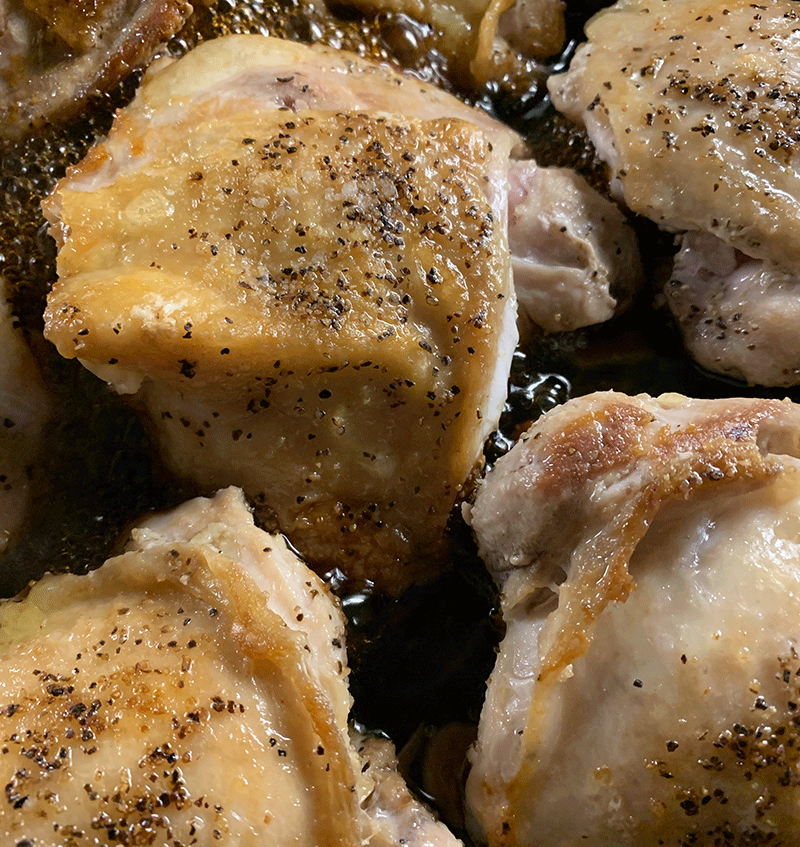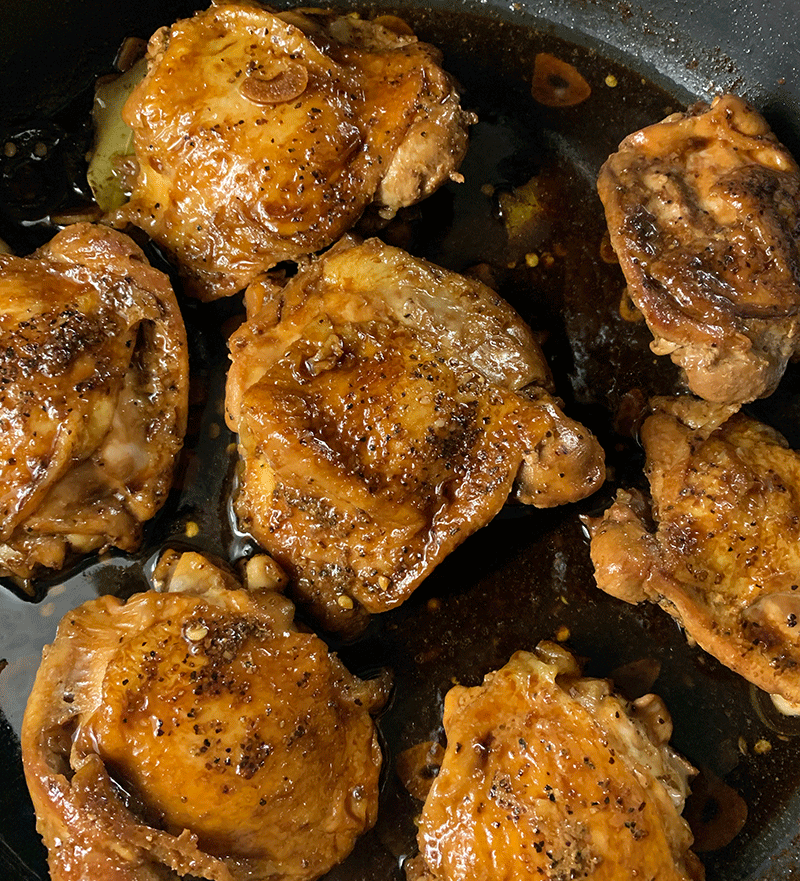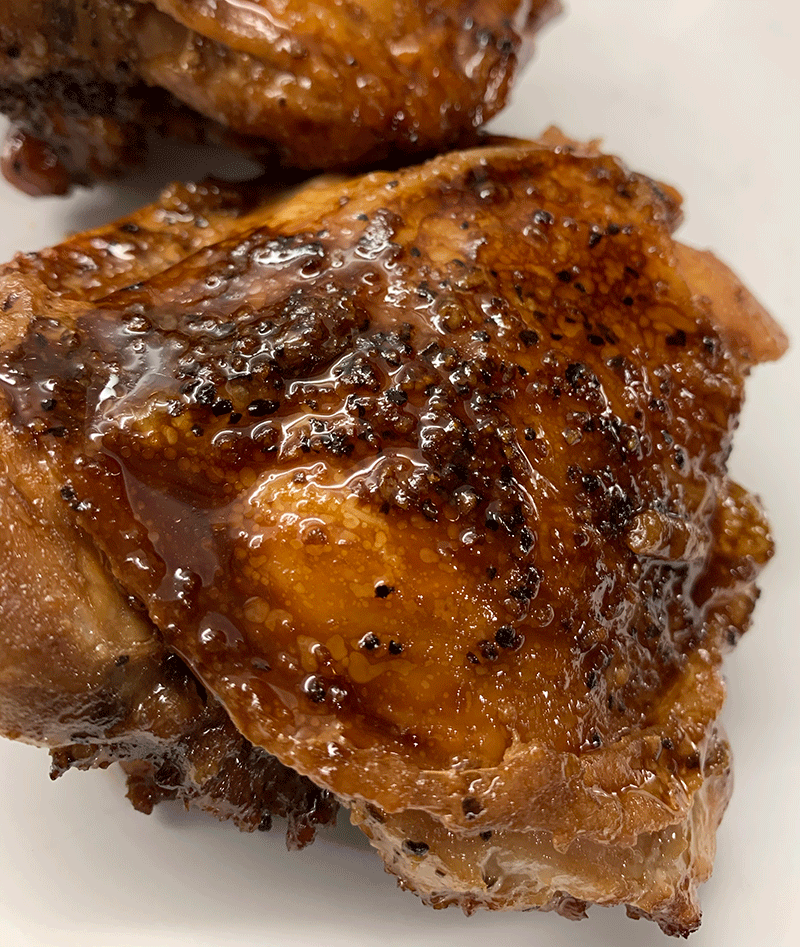
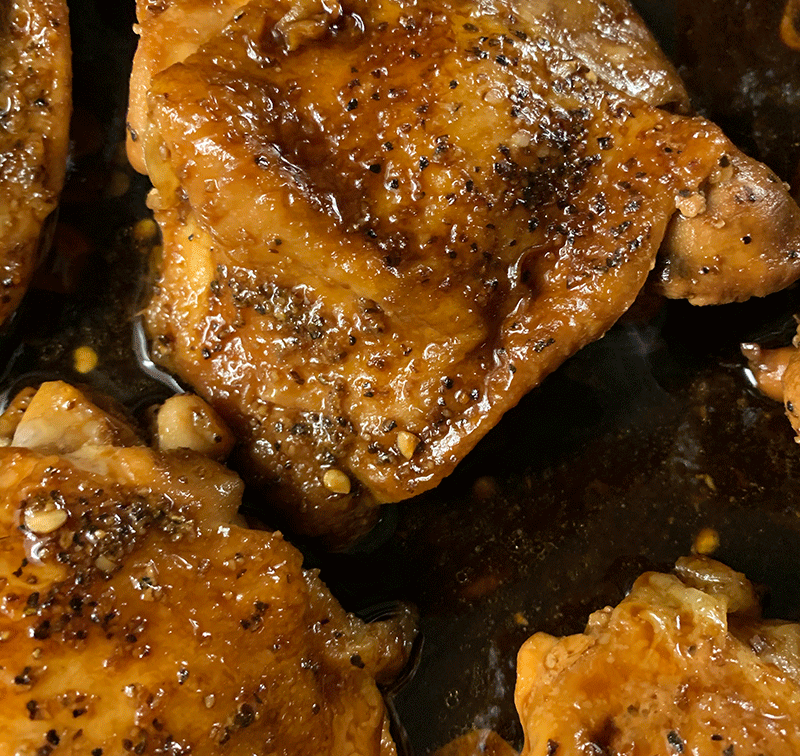
Some years back during our time in Salt Lake City, we befriended a couple from the Philippines. We met outside of the work world, though ironically they were (also) both physicians working in primary care at the time (we happened to meet through a service organization we all worked to support.)
He was the proverbial bull in the china shop – energetic, hard-charging, occasionally uttering thoughts out loud before thinking things through, and highly opinionated; she was shy, quick to smile, a peacemaker (perhaps often out of necessity given her spouse’s inclinations), and an utterly delightful person.
We became friends initially through a common interest in the organization that spawned our meeting, later through fly fishing and raising young families, but mainly through a shared love of great food.
They were fascinated by our bent toward spicy foods of the American Southwest and classic Tex Mex flavors, and we grew to love their Filipino classics, like this Simple Chicken Adobo.
They both described learning the dish watching mothers and grandmothers working in their kitchens while growing up. Interestingly this couple grew up in different regions of the Philippines, and as is typical of regional recipes that develop over time, they each had a slightly different version. Her family always added brown sugar, his didn’t; his added peppers (jalapeños or serranos), her’s didn’t.
Both learned the recipe using regional cane vinegars in the Philippines; you’ll see recipes for chicken adobo recommending any and all sorts of vinegars online these days, though it seems most call for cane vinegar or simple white vinegar. We’ve made it with all sorts of vinegars, most often reaching for cane vinegar, unseasoned rice vinegar, or plain-Jane white vinegar, though even apple cider vinegar works in a pinch.
A quick, important side point related to the preceding paragraphs: NEVER let anyone tell you how you should cook your food or that your recipe passed down through your family isn’t authentic in some way – you’re cooking to suit your palate and that of your family’s, not that of some pedantic ass online.
We’ve chosen over the years to incorporate both of their family spins on this recipe, and find that a bit of brown sugar and sliced peppers make this a better dish.
One final note, we whole-heartedly agree with those who argue that you should reduce the sauce here down to a glaze like consistency at the end; it’s amazingly tasty over the chicken and a garlic rice / garlic cauliflower rice…
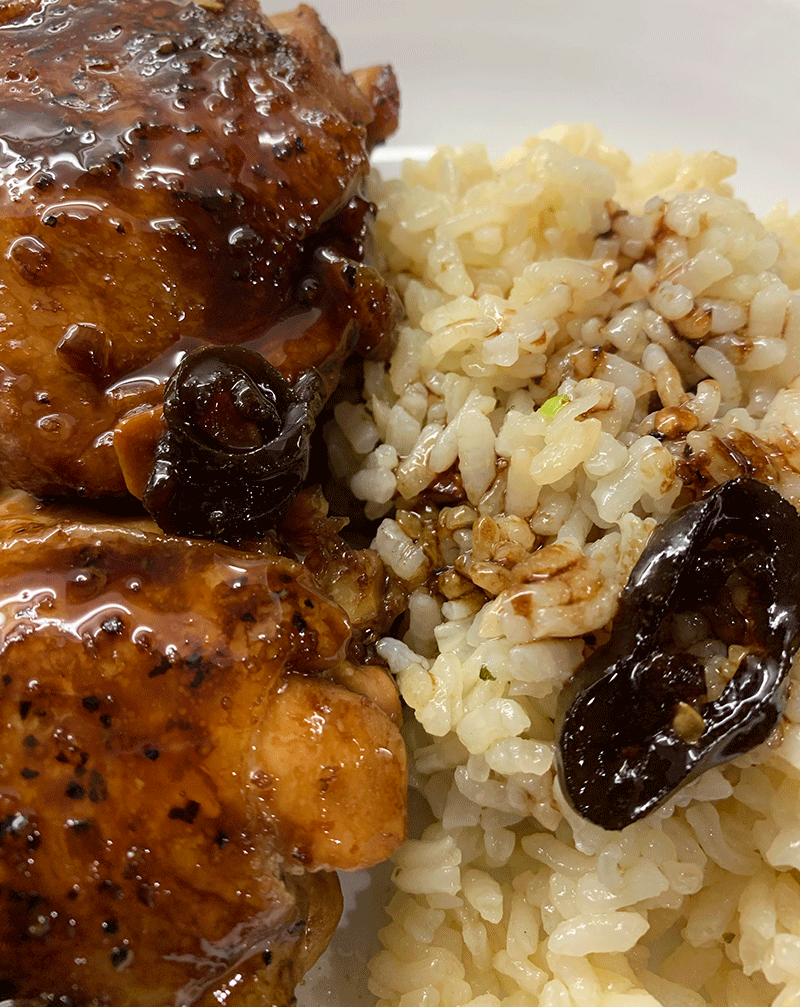
Chicken thighs or drumsticks, 2 lb
Good salt and fresh ground pepper
1 T avocado oil
3/4 cup cane or white vinegar (see above)
3/4 cup soy sauce or tamari
6-8 garlic cloves, crushed
2 T brown sugar
1 T black peppercorns (or 1 t ground pepper)
2-3 bay leaves
1-2 jalapeños, thinly sliced
Season the chicken with salt and pepper to taste, then sauté in your favorite large skillet over medium-high heat for 2-3 minutes per side until browned (you’re not attempting to cook the chicken through now). Remove the chicken.
Now into the skillet goes the vinegar, soy sauce or tamari, crushed garlic, brown sugar, peppercorns, bay leaves, and half the jalapeños; stir to dissolve the sugar and bring to a low boil. Add the chicken back to the pan (skin side up if using skin-on), reduce the heat to maintain a simmer, cover, and cook for 30-40 minutes until the chicken is cooked through. You want your chicken tender but not falling apart; remember to turn the chicken once during this cooking interval.
Pull the chicken and turn up the heat to reduce the sauce to a glaze consistency (add a teaspoon of cornstarch dissolved in water if you want your sauce thicker), then add the chicken back.
Enjoy.
